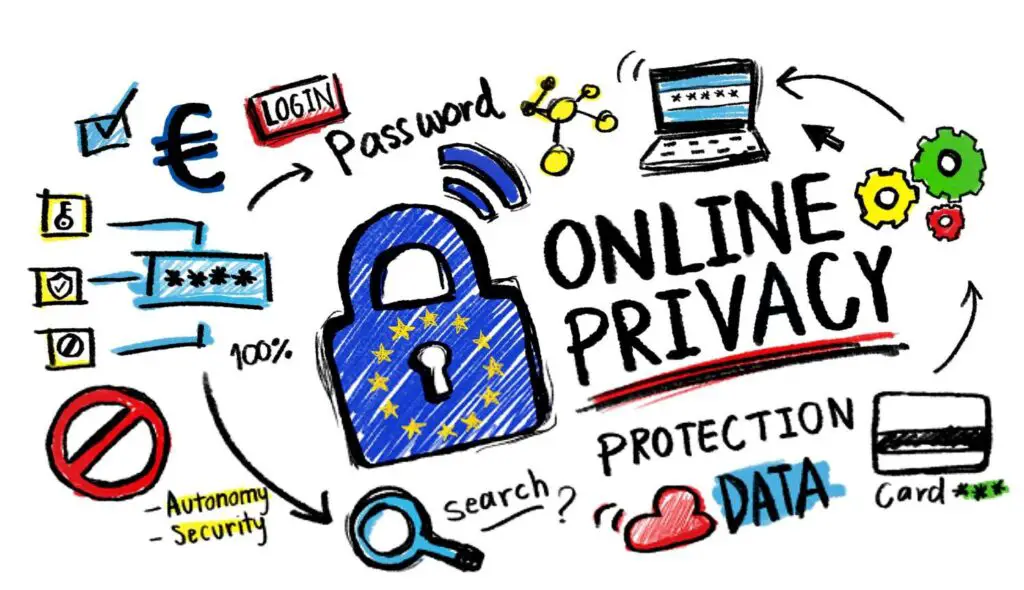Data Privacy Pitfalls: Protecting User Data From Leaks And Breaches

Data privacy has become a paramount concern in the modern digital age, where vast amounts of sensitive user data are collected and processed by organizations. However, despite the growing awareness of data protection, data breaches and leaks remain a persistent threat, putting user privacy and the integrity of organizations at risk. Recognizing and addressing potential data privacy pitfalls is crucial to safeguarding user data and mitigating the impact of security incidents.

Common Data Privacy Pitfalls

Several common pitfalls can lead to data privacy breaches:
-
Weak Password Policies: Weak or easily guessable passwords provide an entry point for unauthorized access, increasing the risk of data breaches.
-
Unprotected Data Storage: Failure to encrypt or properly secure data at rest can expose sensitive information to unauthorized access or theft.
-
Insufficient Access Controls: Inadequate access controls allow unauthorized personnel to access or modify user data, potentially leading to data breaches.
-
System Vulnerabilities: Unpatched software or outdated operating systems can create vulnerabilities that can be exploited by attackers to gain access to sensitive data.
-
Insider Threats: Employees or contractors with access to user data may intentionally or unintentionally compromise data security, leading to data breaches.
Consequences of Data Breaches
Data breaches can have severe consequences for both users and organizations:
-
Identity Theft and Fraud: Stolen personal data can be used for fraudulent activities, such as identity theft, financial fraud, or unauthorized access to accounts.
-
Financial Losses: Organizations responsible for data breaches may face fines, lawsuits, and loss of business due to damaged reputation and loss of customer trust.
-
Legal Penalties: Governments worldwide have implemented data protection regulations, and organizations found violating these regulations may face significant legal penalties.
Mitigation Strategies
To mitigate data privacy pitfalls and prevent data breaches, organizations must adopt a comprehensive data privacy strategy:
-
Implement Strong Password Policies: Enforce complex and unique passwords for all user accounts and regularly conduct password audits.
-
Use Secure Data Storage: Encrypt sensitive data at rest and store it in secure locations, such as cloud-based storage providers with robust data protection measures.
-
Establish Access Controls: Implement role-based access controls to limit access to data only to authorized personnel based on their job functions.
-
Patch Software Regularly: Apply software updates and patches promptly to address system vulnerabilities that could be exploited by attackers.
-
Educate Employees and Stakeholders: Conduct regular security awareness training to educate employees and stakeholders about data privacy best practices and the importance of protecting user data.
-
Regularly Monitor and Audit Data: Continuously monitor data access and usage to detect any suspicious activities or unauthorized access attempts.
-
Develop an Incident Response Plan: Establish a comprehensive incident response plan to guide the organization’s actions in the event of a data breach or leak.
By addressing these data privacy pitfalls and implementing effective mitigation strategies, organizations can protect user data, minimize the risk of breaches, and maintain their reputation as responsible data stewards.## Data Privacy Pitfalls: Protecting User Data From Leaks And Breaches
Executive Summary
Data privacy has become increasingly critical in recent years, with high-profile data breaches and leaks affecting organizations of all sizes. This article highlights some key data privacy challenges and provides practical steps that organizations can take to mitigate these threats and enhance their data protection strategies. By implementing robust data privacy measures, organizations can safeguard sensitive user information, maintain customer trust, and avoid costly financial and reputational damage.
Introduction
Protecting user data in today’s digital age poses significant challenges. With the rise of social media, cloud computing, and mobile technologies, businesses collect vast amounts of personal information exposing them to potential data breaches and unauthorized access. Compromised data can result in severe consequences for both individuals and organizations. Hence, establishing a robust data privacy framework is paramount to ensure the integrity and security of sensitive information.
FAQs
-
How do data breaches happen?
Data breaches can occur in various ways, including hacking, malware attacks, insider threats, and physical theft.
-
What are the consequences of a data breach?
Consequences of data breaches include financial penalties, reputational damage, lost business, and potential legal liabilities.
-
Who is responsible for data privacy?
Both organizations and individuals share responsibility for data privacy. Organizations must implement robust data protection measures, and users should practice caution when sharing personal information online.
Top Data Privacy Pitfalls
Data Collection:
- Excessive Data Collection: Organizations often gather more data than necessary, increasing risk exposure.
- Lack of Consent: Failing to obtain explicit consent from individuals before collecting their personal information.
- Unsafe Storage Practices: Storing sensitive data in unencrypted or easily accessible locations can lead to unauthorized access.
- Inadequate Data Retention Policies: Data should be retained only for as long as necessary for its intended purpose.
- Vendor Risk Management: Neglecting to conduct due diligence on third-party vendors who may handle sensitive data.
Data Sharing:
- Insufficient Access Controls: Granting excessive access privileges to data or sharing it with unauthorized parties.
- Lack of Data Segregation: Sensitive data should be segregated from non-sensitive data to minimize the impact of a breach.
- Inadequate Data Sharing Agreements: Contracts should clearly define data usage and storage practices with any third parties.
- Cross-Border Data Transfers: Compliance with privacy regulations when transferring data across borders.
- Third-Party Breaches: Data breaches can occur through third-party vendors who handle sensitive data.
Data Usage:
- Lack of Purpose Limitation: Data should only be used for the specific purpose for which it was collected.
- Data Misuse and Manipulation: Unauthorized or malicious use of personal data can have severe consequences.
- Profiling and Discrimination: Using data to profile individuals or make discriminatory decisions based on sensitive information.
- Lack of Transparency: Failing to inform individuals about how their data is being used and processed.
- Consent Management: Improper handling of data consent, opt-out mechanisms, and data retention standards.
Cybersecurity:
- Vulnerable IT Systems: Exploitable security weaknesses in hardware, software, or network infrastructure.
- Malware and Phishing Attacks: Malicious software and targeted phishing attacks can compromise systems and steal sensitive data.
- Insider Threats: Internal employees or contractors with malicious intent can cause significant damage to data.
- Lack of Employee Training: Inadequate cybersecurity awareness and training for employees can lead to security breaches.
- Outdated Security Practices: Failing to implement or maintain up-to-date security protocols and technologies.
Compliance:
- Failure to Comply with Regulations: Ignorance or non-compliance of data privacy laws and regulations.
- Lack of Data Breach Notification Protocols: Failing to promptly disclose data breaches to affected individuals and regulatory authorities.
- Inadequate Data Breach Response Plans: Unpreparedness in responding to and mitigating data breaches can worsen their impact.
- Lack of Privacy Impact Assessments: Neglecting to conduct thorough privacy impact assessments before implementing new data-handling practices.
- Data Protection by Design: Failing to integrate privacy protections into the design and development of systems that handle personal data.
Conclusion
Data privacy is crucial for maintaining trust in the digital age. Organizations must understand the pitfalls and implement comprehensive data protection strategies to safeguard user data. By addressing these challenges, organizations can proactively reduce their risk of costly breaches and leaks. Embracing data privacy best practices, collaborating with key stakeholders, and continuously monitoring for potential threats will contribute to a robust data protection framework that enhances the security and integrity of user data.
Relevant Keywords
- Data Privacy
- Data Protection
- Data Breaches
- Cybersecurity
- Compliance


